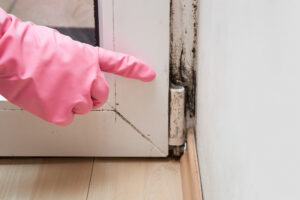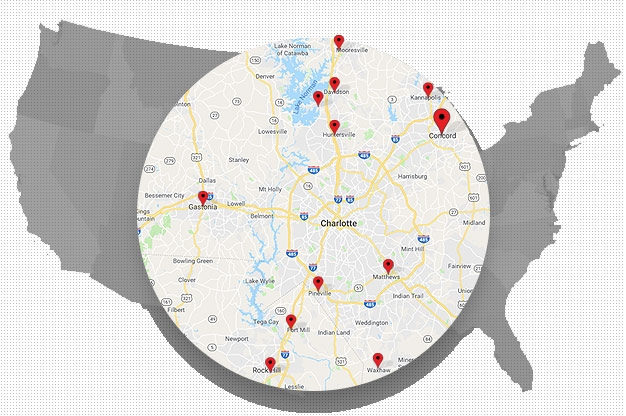How to Get Rid of Mold: A Complete Guide

Following water damage, mold takes as few as 24 hours to form. It’s no surprise that 70% of homes have mold. Unfortunately, 28% of people are genetically predisposed to mold-related health problems.
If you’ve spotted signs of mold growth in your home, it’s important to know how to get rid of mold before it spreads. Here are a few easy mold removal tips you can use to clear every trace of mold from your home.
Read on to learn more!
Recognize the Signs
Before learning how to remove mold from your home, you’ll need to recognize the signs mold has started to grow. You’ll also need to consider:
- If you have mold
- What types of mold are present
- If those types are dangerous
- If you can safely remove the mold yourself
It’s also important to note that mold isn’t always visible. However, it can still cause an odor to develop and spread throughout your home. It could even cause structural damage when left unattended for too long.
Though the terms mold and mildew are used interchangeably, there is a difference.
Mildew doesn’t normally cause damage. Usually starting off white or yellow, mildew grows on surfaces before turning darker shades. It’s often mistaken for dirt.
Dab the affected area with a mixture of bleach and water. If the area lightens in color, it’s likely mildew.
Mold, on the other hand, can appear:
- Green
- Yellow
- Brown
- Black
- Blue
It can appear slimy or fuzzy, growing in patches that travel beneath a material’s surface. Mold is usually harder to spot and clean.
Mold usually has a musty odor. It can grow behind walls or under carpets.
Mold can also contribute to chronic health issues like headaches, nosebleeds, and sinusitis. Other symptoms include rashes, chronic fatigue, and conjunctivitis. If you or a loved one experiences these symptoms, consider mold removal services right away.
Gather Supplies
Mold can grow anywhere, even if you keep your home clean. A tiny spore can land on a damp surface before multiplying and spreading.
First, consider checking your home moisture levels. Mold usually grows in damp, moist areas like your bathrooms, basement, kitchen, or laundry room.
When left unattended, mold can continue to grow out of sight before causing structural damage. Consider having the necessary tools and supplies on hand to remain prepared. These can include:
- Goggles
- Protective gloves
- N-95
- A box fan
- Plastic sheets
- Tape
- Spray bottle
- Paint brush and scrub brush
- Garage bags
- Bleach
- Wet/dry vac
- Dish soap
- Vinegar
- Peroxide
Before you use the rest of these tips, note you should avoid mixing chemicals when cleaning mold away. Some chemicals like ammonia and bleach can create a poisonous, lethal gas when combined.
Try using nonreactive chemicals when you can. Otherwise, call a professional mold removal company to ensure your family’s safety.
Step-by-Step
Read through these steps before you begin working through the process. Here’s how you can safely remove mold from your home.
Prepare the Room
First, take the necessary safety precautions. Secure the area to ensure your safety and to keep mold spores from spreading.
Put your gloves, mask, and safety goggles on.
Next, place a box fan near a window to ensure proper ventilation. Tape plywood or cardboard around any remaining open spaces. Turn your air conditioner off and cover all air ducts.
Make sure to convert nearby doorways with plastic sheeting. Moisten any moldy areas to contain spores as well.
Remove Carpets
Remove and dispose of any moldy carpets or area rugs.
Using a utility knife, cut any stained or moldy carpet into 6×8 sections. Mist the sections with a spray bottle to keep spores from spreading. Secure these sections in plastic and remove them from your home.
Open Walls
Remember, mold can hide behind your walls, wallpaper, and baseboards.
Scrub any hard surfaces in your home with a commercial cleaner. For porous surfaces, carefully wipe them clean using a rag.
If mold is visible, there’s likely hidden mold beyond the surface. Determine if your walls are stained, swollen, or spongy. Chances are, mold damage has already developed.
Before getting started, turn off the power to the room.
Pry off the baseboards and trim using a pry bar. Otherwise, poke holes in the drywall. Cut away moldy drywall until you reach a clean area.
Remove moldy insulation, crumbling wood, or drywall from your home.
Scrub Up
To prevent mold regrowth, clean and seal any remaining surfaces. You can:
- Mix a quart of water with half a cup of bleach
- Scrub surfaces using a soft-bristled brush
- Let the bleach solution penetrate surfaces
- Wipe the solution off (don’t rinse)
- Use direct sunlight to dry each area
Use fans and dehumidifiers to promote complete drying. Otherwise, new mold could grow.
Vacuum Debris
Use a wet or dry vac to remove any remaining debris from each room. Vacuum any moldy debris to keep the mold from spreading.
Toss out the vacuum filter when you’re done. Make sure to wash out the tank, hose, and attachments using a bleach and water solution.
When to Call a Professional
There are an estimated 300,000 different types of mold. Some are more likely than others to appear within your home. In some cases, you might want to consider hiring a professional mold removal team.
Otherwise, the DIY route could put your health at risk.
For example, perhaps you know or suspect your home was built with hazardous materials (like asbestos or lead). Instead of disturbing these materials, call a mold remediation team. They’ll have the proper equipment for the job.
Maybe there’s a large amount of black mold you can’t easily remove alone. Make sure to hire black mold removal specialists for serious infestations.
You should also call a pro if:
- You can smell but can’t find the source of the mold
- Someone in your home suffers from a respiratory condition
- The mold has caused structural damage
Mold can be actively dangerous and toxic, thereby posing a health risk. If these factors sound familiar, contact a professional mold removal expert right away.
Squeaky Clean: Get Rid of Mold From Your Home Today
Get rid of mold throughout your home! Use these tips to deep clean your home without putting your health at risk.
Remember, you don’t have to complete the mold removal process alone. Instead, consider hiring a professional team to help.
Contact our team today to learn more.
Recent Posts
- How Crawl Space Encapsulation Benefits the Environment – An Expert Guide
- 6 Ways Professionals Keep Your Crawl Space in Top Shape
- Structural Repair Solutions for Crawl Spaces, Basements, and Foundations
- Essential Crawl Space Repair Tips Every Homeowner Should Know
- The Importance of Radon Mitigation: Ensuring a Safe Living Environment for Homeowners
Categories
- Basement Mold
- Basement Waterproof Foundation
- Basement Waterproofing
- Crawl Space Dehumidifier
- Crawl Space Encapsulation Cost
- Crawl Space Repair
- Crawl Space Waterproofing
- Encapsulation
- Foundation Repair
- Foundation Waterproofing
- French Drains
- Leaky Basement
- Mold Remediation
- Mold Removal
- Radon
- Slab Jacking
- Sump Pump
- Uncategorized
- Vapor Barrier
- Water Leak
- Waterproofing
- White Mold
Archives
- June 2024
- May 2024
- March 2024
- January 2024
- June 2023
- May 2023
- April 2023
- March 2023
- February 2023
- January 2023
- December 2022
- November 2022
- October 2022
- September 2022
- August 2022
- July 2022
- June 2022
- May 2022
- March 2022
- February 2022
- January 2022
- December 2021
- November 2021
- October 2021
- September 2021
- August 2021
- July 2021
- June 2021
- May 2021
- April 2021
- March 2021
- February 2021
- January 2021
- December 2020
- November 2020
- October 2020
- September 2020
- August 2020
- July 2020
- June 2020
- May 2020
- April 2020
- March 2020
- February 2020
- January 2020
- December 2019
- November 2019
- October 2019
- September 2019
- August 2019
- July 2019
- June 2019
- May 2019

